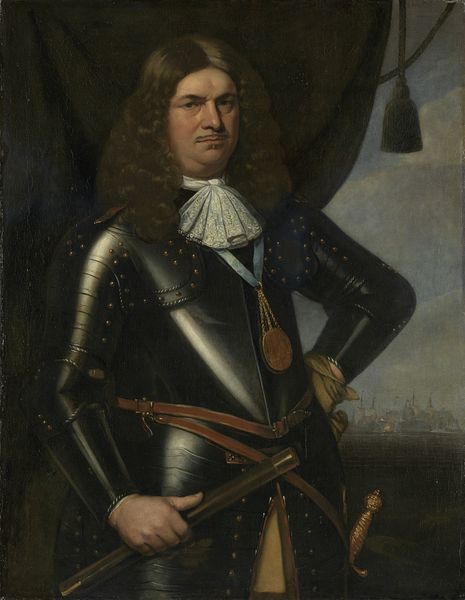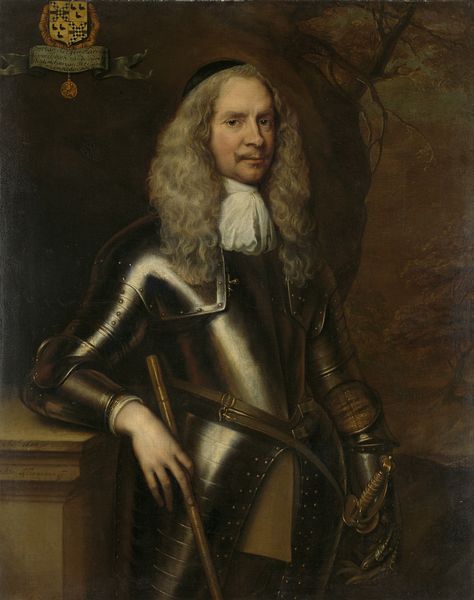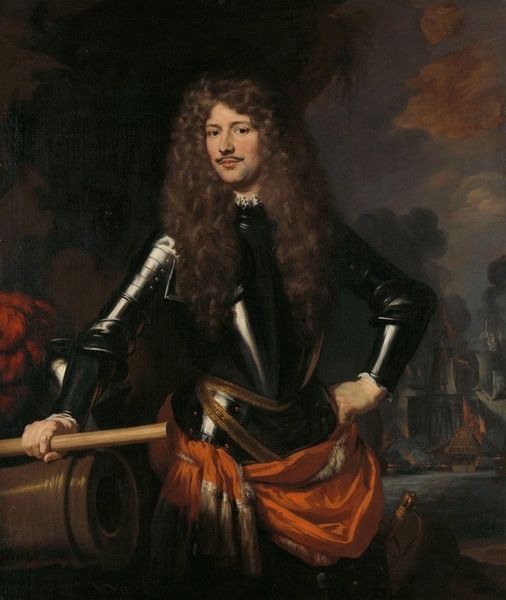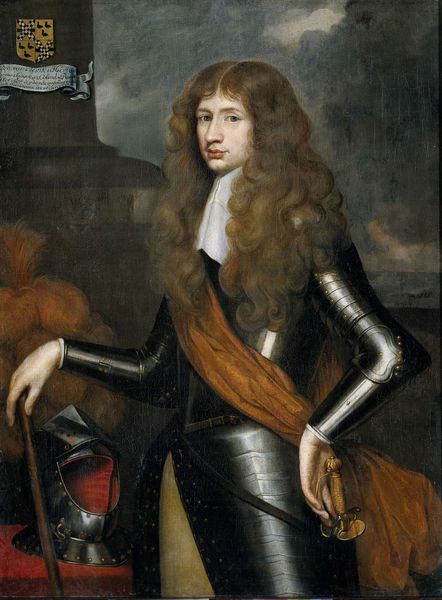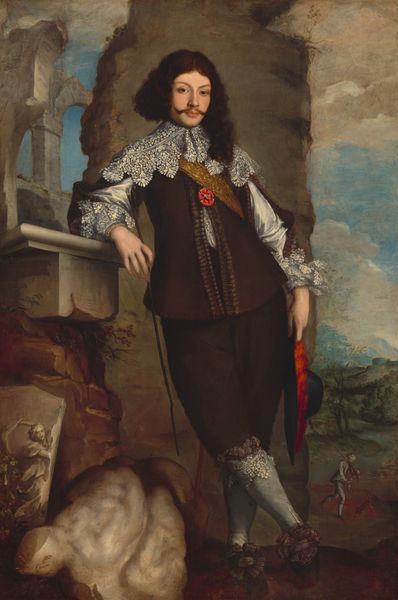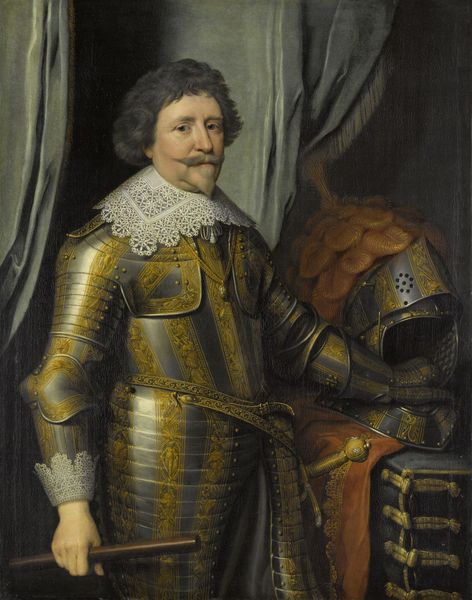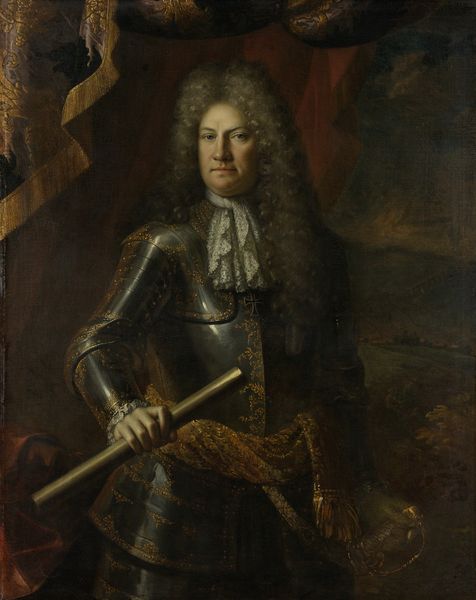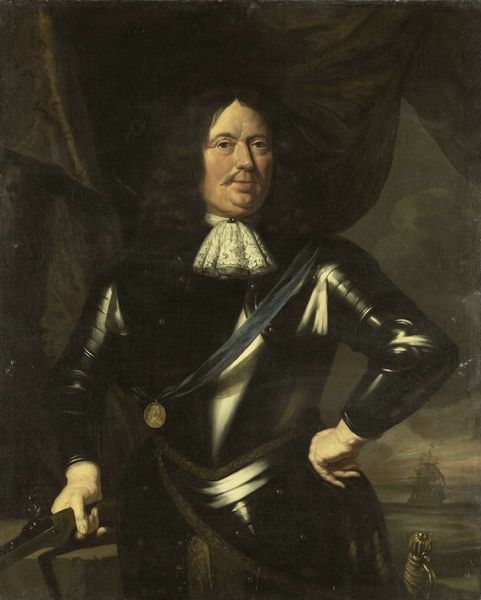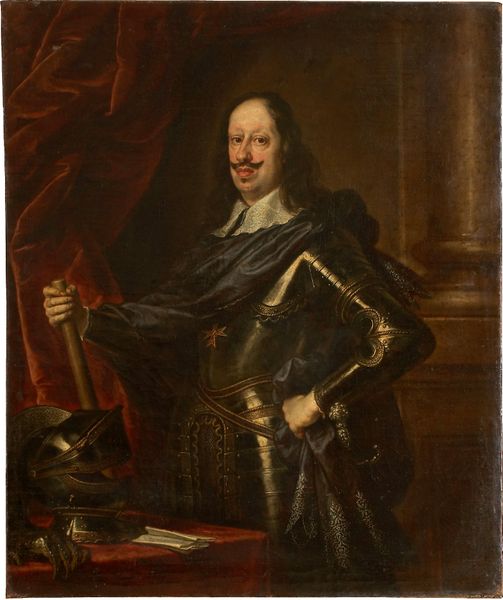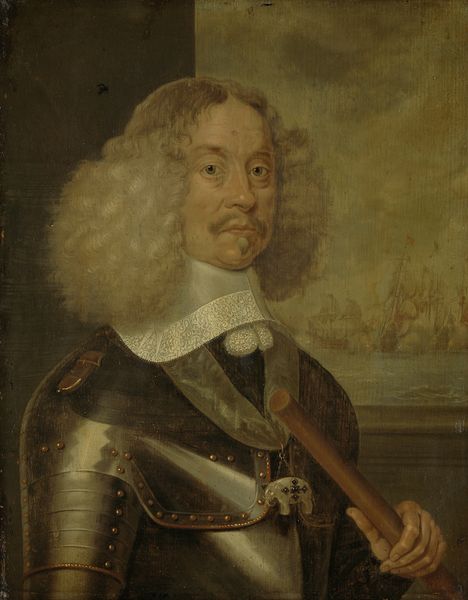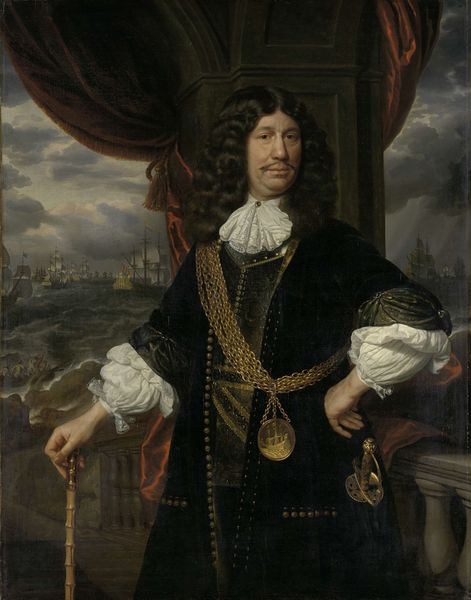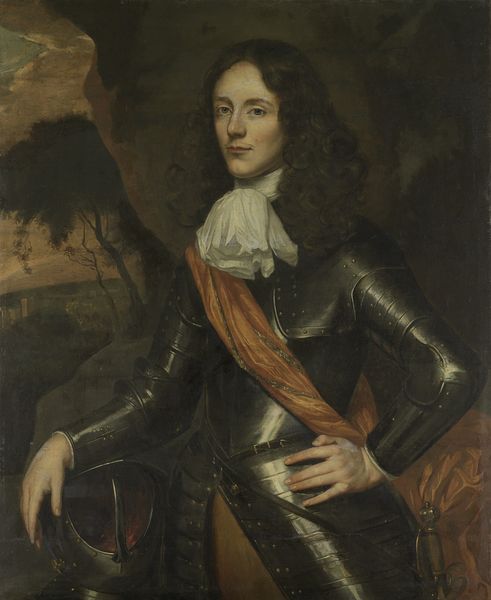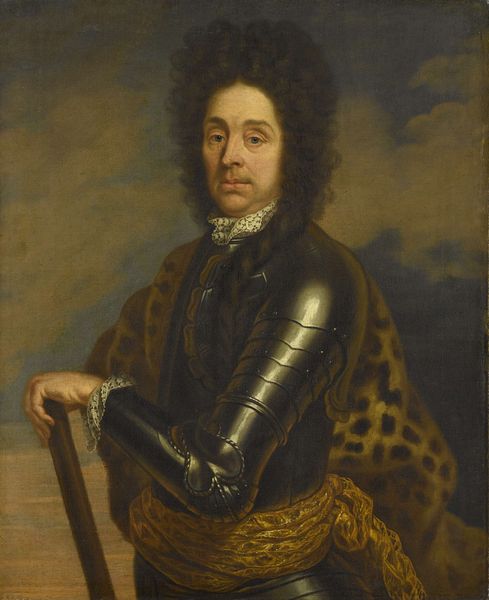
Johan van Beaumont. Colonel in the Holland guards and commander of Den Briel 1661
0:00
0:00
painting, oil-paint
#
portrait
#
baroque
#
painting
#
oil-paint
#
history-painting
#
academic-art
Dimensions: height 109 cm, width 91 cm, depth 8.2 cm
Copyright: Rijks Museum: Open Domain
Editor: Here we have Jan Mijtens' "Johan van Beaumont, Colonel in the Holland Guards and Commander of Den Briel", created in 1661 using oil paint. I find the juxtaposition of the hard, reflective armor against the soft, almost melancholic sky, quite striking. How do you interpret the composition and the artist’s choice of these contrasting textures? Curator: The painting presents a study in contrasts, doesn't it? Mijtens meticulously renders the play of light across the metallic surface of the armor, highlighting its texture and form. Observe how the reflections capture and distort the surrounding light, creating a dynamic interplay of light and shadow. The background, rendered with broad brushstrokes, lacks such intricate detail, which enhances the crisp precision in the Colonel's armor. Do you perceive a sense of hierarchy here? Editor: I do. The smooth strokes used for the sky feel almost careless in contrast with the detail afforded to Johan, drawing my focus intensely towards the Colonel. Does the use of a dark palette enhance the effect? Curator: Indeed. The strategic deployment of chiaroscuro, the contrast between light and dark, serves to emphasize the figure’s three-dimensionality and assert his presence within the pictorial space. The darkness of the armor itself also reinforces the Colonel’s might and position. Note the texture achieved on the edges; the rust-like detailing is especially clever, grounding the fantastical image. Editor: That’s fascinating. I had initially focused on the visual contrasts without considering how these elements reinforce themes of power and importance through visual language. I now understand the intentionality in contrasting textures. Curator: Precisely. By examining how Mijtens utilizes color, texture, and light, we begin to unravel the symbolic weight embedded within the painting’s formal elements. This is the visual rhetoric through which artistic intentions are expressed and through which our comprehension evolves.
Comments
No comments
Be the first to comment and join the conversation on the ultimate creative platform.
